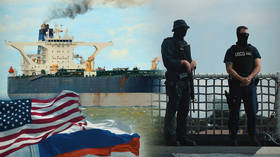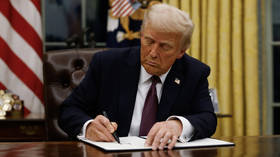‘Looted by Nazis’: Jewish group demands Germany return art trove discovered in 2011

A trove of 1,500 paintings worth over $1 billion was discovered in a Munich apartment, Germany has confirmed. Authorities who failed to report the finding for over two years are facing demands by Jewish rights groups to return the art “looted by Nazis.”
The German government confirmed on Monday that it is
investigating the case which was reported in Germany's Focus
magazine over the weekend. The publication claimed that 1,500
works - including masterpieces of Pablo Picasso, Henri Matisse,
and Emil Nolde - were found in a Munich apartment in early 2011.
The Conference on Jewish Material Claims Against Germany demanded
that Germany return looted paintings to their rightful owners
after the scandal erupted.
"We demand the paintings be returned to their original owners. It
cannot be, as in this case, that what amounts morally to the
concealment of stolen goods continues," said Ruediger Mahlo
of the Claims Conference.
Angela Merkel’s office confirmed that the government was aware of
the find for several months.
“The federal government was informed several months ago about
the case,” spokesman Steffen Seibert said, adding that
authorities were supplying “advice from experts in the field
of so-called 'degenerate art' and the area of Nazi-looted
art.”
Officials in Bavaria declined to comment on the case, instead
calling a press conference on Tuesday.
The collection of 1,500 paintings, valued at around US$1.4
billion, was discovered by customs officials in the home of
Cornelius Gurlitt - the son of a Munich art collector at the time
of Nazi rule. The pieces were allegedly looted from Jewish homes
or purchased for almost nothing.
The discovery emerged as part of a suspected tax evasion
investigation of Cornelius Gurlitt, who maintained millions in
his bank account by selling off his father’s collection.
Through the course of the investigation, it was discovered that
Cornelius' father, Hildebrand Gurlitt, was a prominent modern art
collector in the 1920s. With the takeover of Adolf Hitler, some
contemporary art was branded as "degenerate" and removed
from state museums.
Gurlitt was hired by Nazi propaganda minister Joseph Goebbels to
sell the “degenerate art.” While implementing state
policy, Gurlitt bought some pieces for himself. After the war,
Gurlitt - who claimed to have Jewish descent - was allowed by
Americans to continue working as a dealer until his death in
1956.
“Cornelius Gurlitt inherited the works after the death of his
mother Helene. Basically this is a case of undeclared
inheritance,” Karl-Sax Feddersen, a lawyer with Lempertz
auctioneers in Cologne told Reuters.

“From our point of view this is a totally normal case. An old
gentleman contacted our Munich office and offered them a Beckmann
pastel...we had a restitution problem which we actively addressed
and we found a solution ahead of the auction,” Feddersen
said, commenting on one particular case when the auction house
discovered that artwork had been bought from a Jewish owner.
Another auction house in the Swiss city of Bern said in a
statement that Gurlitt auctioned off paper works in 1990 that
were purchased cheaply in 1938 by Hildebrand Gurlitt from a
collection of state-owned art. Galerie Kornfeld highlighted that
a distinction should be made between looted art and that of
former German state-owned "degenerate art" which can be freely
traded.
"We don't know how many of the 1,500 works are 'degenerate' works
or looted by the Nazis," said art expert Christoph Zuschlag
from the University of Koblenz. "So we need to examine each
piece individually."
He also said the authenticity of the collection needs to be
checked. "We need to see whether these were originals or
prints," as two-thirds out of 21,000 pieces of ‘degenerate
art’ taken from German museums around 1937 were prints.
According to the US Holocaust Memorial Museum, at least 16,000
artworks were seized by the Nazis, as Jewish collectors were
forced to sell artwork at extremely low prices to Nazi-linked
dealers in order to purchase exit visas to flee Germany for safer
countries.
The masterpieces seized from Gurlitt are currently being stored
in a secure, undisclosed Munich warehouse. A full list of the
artworks has not been shared by the authorities, who claim to be
in the process of finding the rightful owners. German art
historian Meike Hoffmann, from Berlin University, has been tasked
with assessing their origin and value.












